Omni-directional microphones, commonly known as “omni mics,†stand as pivotal tools within the realms of audio recording and broadcasting. Their extraordinary capability to capture sound from all directions makes them indispensable and highly coveted across a wide spectrum of applications.
In this extensive discourse, we will embark on a detailed exploration of omni-directional microphones, delving into the intricacies of their technology, unveiling their diverse applications, dissecting their strengths, and highlighting their inherent limitations. As you navigate through this comprehensive article, you will gain profound insights into the inner workings of these microphones and discover the precise scenarios in which they truly shine.
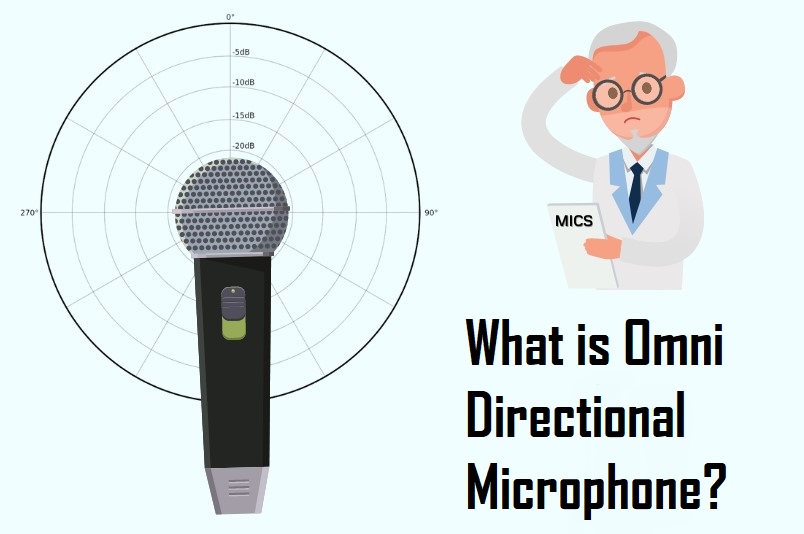
Table of Contents
Understanding the Omni-Directional Microphone
An omni-directional microphone is meticulously crafted with the primary objective of capturing sound from every conceivable angle around its diaphragm, thereby creating a complete 360-degree pickup pattern.
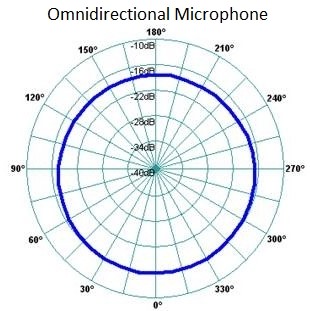
What sets omni mics apart from their microphone counterparts, characterized by distinct directional attributes such as cardioid or shotgun microphones, is their steadfast refusal to demonstrate any innate predisposition towards the direction of the sound source. Instead, these microphones are designed to perform with remarkable even-handedness, ensnaring audio with unfaltering equality from all points on the compass.
Technology Behind Omni-Directional Microphones
Omni-directional microphones utilize a specific design to achieve their all-encompassing sound pickup. At their core, these microphones consist of three essential components: a diaphragm, a backplate, and an omnidirectional capsule.
- Diaphragm: The diaphragm is the microphone’s sound-sensitive element. It is a thin, usually circular membrane that vibrates in response to sound waves. The diaphragm’s movement generates electrical signals that represent the captured audio.
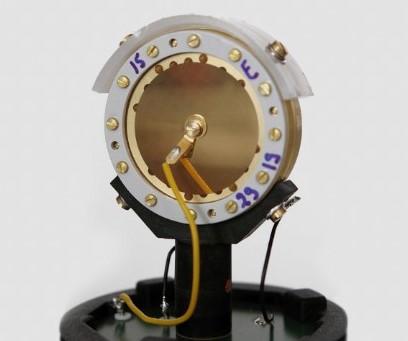
- Backplate: Positioned behind the diaphragm, the backplate helps create an electrically charged capacitor with the diaphragm. As the diaphragm moves, the distance between the diaphragm and the backplate changes, resulting in variations in capacitance.
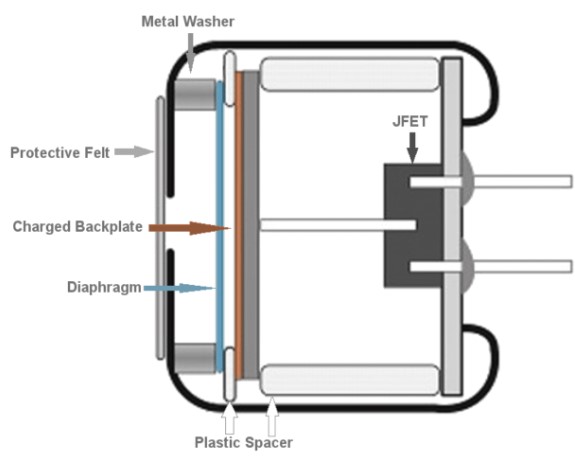
- Omnidirectional Capsule: The omnidirectional capsule is the key to capturing sound from all directions. It surrounds the diaphragm and is designed to ensure that sound waves arriving from any angle can influence the diaphragm’s movement.
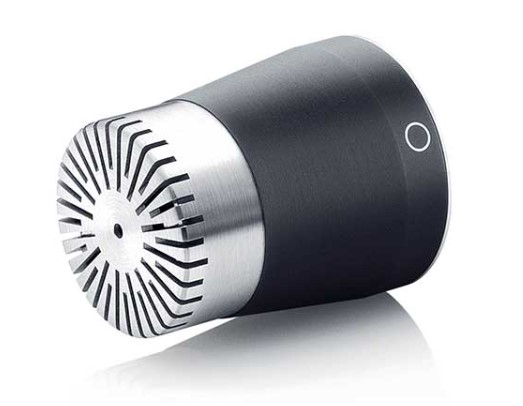
What Constitutes a Mic as Omnidirectional
When delving into polar patterns, which we’ll discuss later in this article, it’s essential to understand that a microphone’s construction determines whether it falls into the omnidirectional or unidirectional category.
The critical factor revolves around the microphone’s capsule type and how sound pressure waves influence the diaphragm within the capsule. There are two fundamental capsule types:
Pressure Capsules: These capsules have only one side exposed to sound pressure waves, with the diaphragm situated on that side. The opposite side is sealed with a fixed plate, ensuring it remains still, free from vibrations. It’s worth noting that omnidirectional capsules feature a small hole on the sealed side, but it doesn’t impact sound capture.
Gradient Capsules: In contrast, gradient capsules possess open sides on both ends. Sound waves entering from one side and exiting from the other create a subtle air pressure gradient. This gradient’s strength varies with the angle of sound incidence, providing gradient capsules with directionality, classifying them as unidirectional microphones.
Pressure or Gradient Capsule in Omnidirectional Mic
Omnidirectional microphones exclusively use pressure capsules with one side housing the diaphragm exposed to air pressure. The opposite side is fixed and has a small hole, but this doesn’t impact sound capture. The microphone’s omnidirectional capability stems from air’s uniform pressure in all directions, causing the diaphragm to vibrate evenly, enabling it to respond uniformly to sound from any direction.
Pressure gradient capsules, on the other hand, possess open sides on both ends. In these capsules, the diaphragm reacts to sound waves entering from one side and passing through to the other, creating a minuscule difference or gradient in air pressure. This gradient varies with the angle of sound incidence, rendering pressure gradient capsules directionally sensitive or unidirectional.
How Do Omni-Directional Microphones Work?
Omni-directional microphones operate on the principle of pressure gradient. When sound waves reach the microphone, they create pressure variations on the diaphragm. Since an omni microphone is equally sensitive to pressure changes from all directions, it captures the entire sound field without bias.
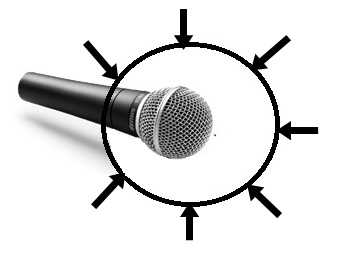
The microphone’s diaphragm vibrates in response to these pressure changes. This movement modulates the capacitance between the diaphragm and backplate, resulting in an electrical signal. This signal is then amplified and sent to recording equipment or a sound system.
The Principle of Pressure Gradient
The functionality of omni-directional microphones hinges upon the fundamental principle of pressure gradient. As sound waves traverse their path towards the microphone, they impart discernible pressure fluctuations upon the microphone’s diaphragm. The uniqueness of omni microphones lies in their uniform sensitivity to pressure changes originating from every conceivable direction, ensuring that no portion of the sonic spectrum remains untouched or underrepresented.
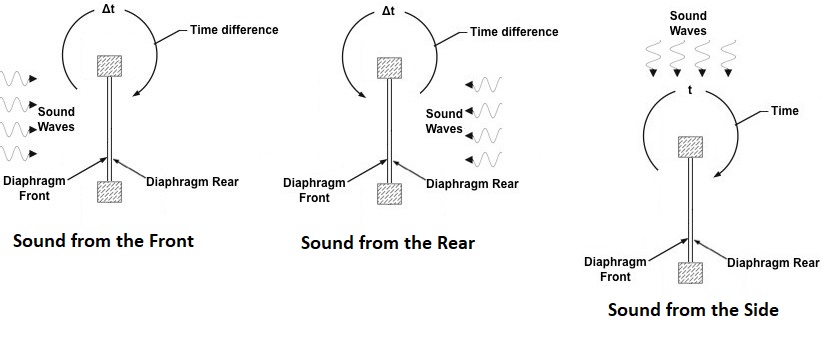
The Diaphragm’s Response to Sonic Pressure
Upon encountering the pressure variations, the microphone’s diaphragm springs into action, responding to the sonic onslaught with a series of meticulously orchestrated movements. These minute but precise diaphragm oscillations serve as the conduit through which the acoustic energy is transduced into its electrical counterpart. This transformation process is governed by the modulation of capacitance, a critical mechanism at play.
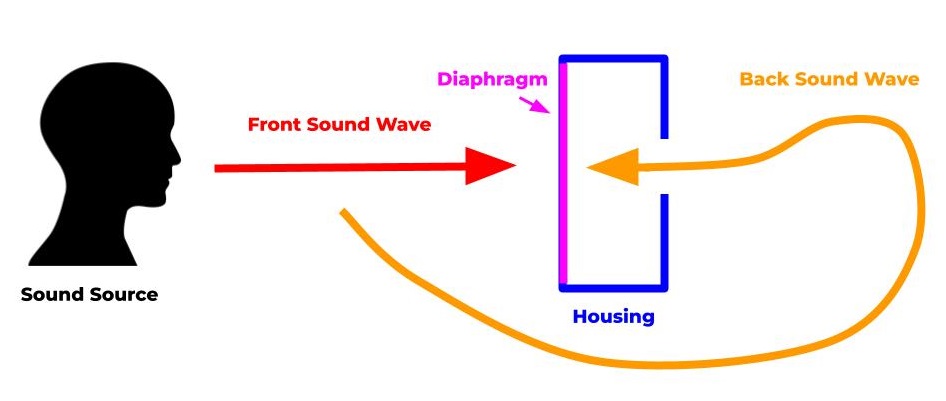
The diaphragm, positioned at the forefront of this sonic alchemy, undergoes deflections mirroring the incoming sound waves’ pressure fluctuations. These diaphragm movements, akin to a finely-tuned symphony conductor, execute the intricate choreography of modulating the space or capacitance between the diaphragm and the equally vital backplate situated in close proximity.
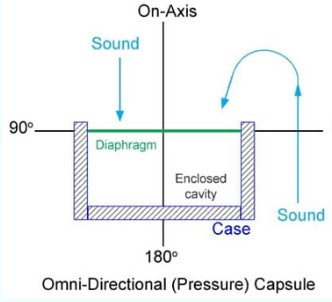
Modulating Capacitance: The Key Mechanism
This fluctuating capacitance, in turn, begets the generation of an electrical signal that faithfully encapsulates the entirety of the captured audio spectrum. This nascent electrical signal, akin to a musical score, encapsulates the essence of the recorded sound waves, preserving their nuances and intricacies.
Transformation from Acoustic to Electrical
Subsequently, this electrical signal embarks on a transformative journey. It encounters amplification, a process that elevates its magnitude, ensuring that the captured audio is robust and ready for the next stage of its sonic voyage.
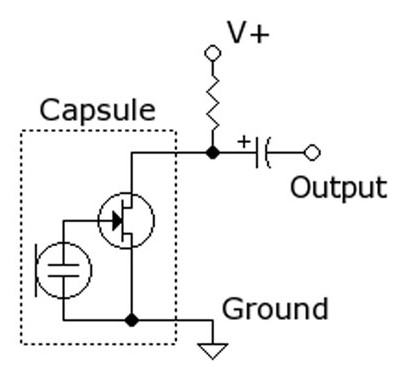
Amplification to Elevate the Audio Signal
Once duly amplified, the signal proceeds on its path, destined for recording equipment or integration into a sound system. It is here that the auditory magic is woven into the fabric of recorded media, be it for studio recording, live broadcasting, or any of the myriad applications that benefit from the all-encompassing prowess of omni-directional microphones.
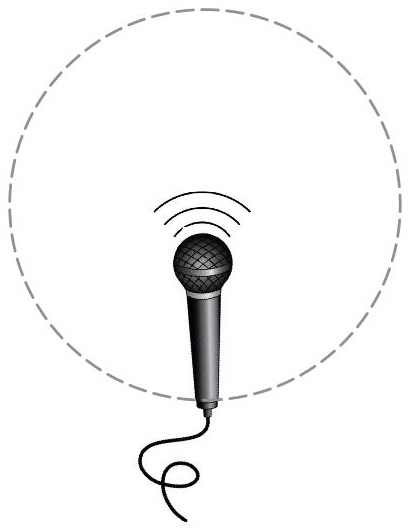
Applications of Omni-Directional Microphones
Omni-directional microphones, esteemed for their unmatched sound-capturing prowess, have carved a prominent niche in various professional fields. Their exceptional capabilities make them invaluable tools in a wide array of applications, each harnessing their unique strengths and attributes. Here, we delve deeper into the technical intricacies and applications of omni-directional microphones:
1. Studio Recording: Crafting Natural Soundscapes
In the realm of controlled studio environments, omni-directional microphones are cherished for their unparalleled ability to authentically capture the ambient qualities of a room. These microphones excel at preserving the inherent reverb, echo, and spatial characteristics, allowing recording engineers to sculpt a truly immersive auditory experience. Additionally, omni mics shine when tasked with the simultaneous recording of multiple sound sources, preserving the harmonious blend of sonic elements in a natural and unadulterated form.
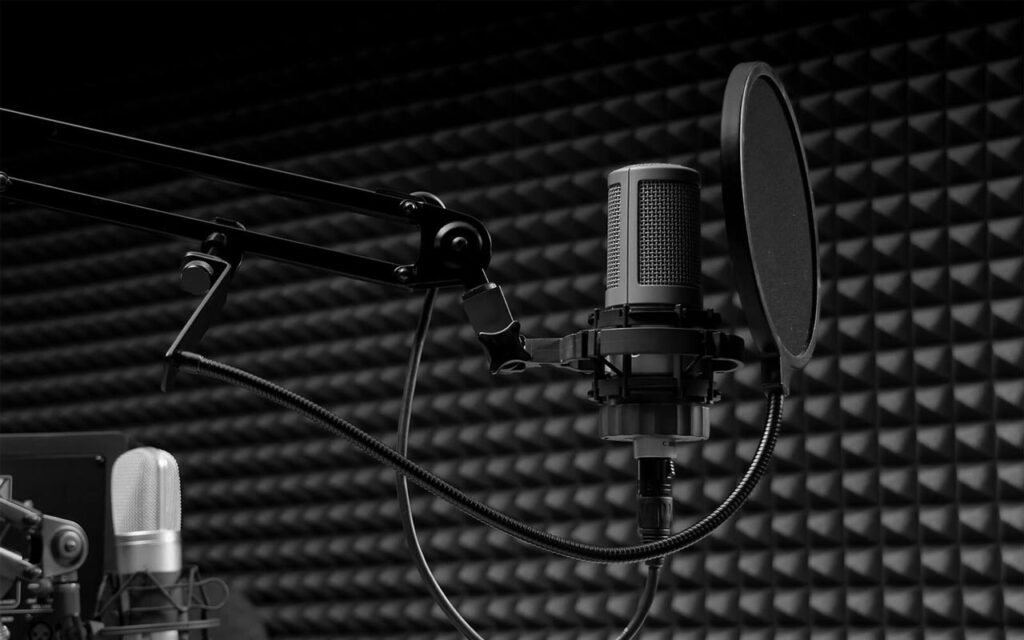
2. Broadcasting: Ensuring Clear and Comprehensive Sound
Radio and television broadcasters, the authoritative voices of information and entertainment, place their trust in omni-directional microphones for various key applications. During interviews and panel discussions, where capturing sound from diverse directions is paramount, omni mics become the weapon of choice. Their all-encompassing pickup pattern guarantees that every word spoken, regardless of the speaker’s orientation, resonates with clarity and precision. In the realm of live broadcasts, where fluidity and spontaneity rule, these microphones prove indispensable in delivering dynamic and inclusive soundscapes.

3. Field Recording: Capturing the Wild and Natural
Venturing into the great outdoors for field recording and environmental sound capture demands a tool that can faithfully render the nuances of the wild. Omni-directional microphones rise to the occasion with remarkable finesse. They effortlessly capture the symphony of nature, from the rustling leaves in a forest to the distant calls of wildlife. Their ability to capture sound from all directions ensures that nothing escapes the recording, making them the ideal companions for audio enthusiasts and nature documentarians alike.

4. Conference and Meeting Rooms: Aiding Clear Communication
In corporate settings, effective communication is paramount. Omni-directional microphones prove their worth in conference and meeting rooms, ensuring that every participant’s voice is crisply recorded, irrespective of their position within the room. Whether it’s a boardroom discussion or a global teleconference, these microphones facilitate seamless interactions by eliminating the need for participants to be in proximity to a single microphone. The result is crystal-clear audio, fostering effective collaboration.

5. Lavalier Microphones: Flexible Wearable Sound Capture
Lavalier microphones, discreetly worn by speakers, benefit from the inclusion of omni-directional capsules. This strategic design choice allows lavalier mics to capture sound emanating from the wearer with unfaltering accuracy, regardless of head movements or body orientation. The versatility offered by omni mics within these small, inconspicuous devices enhances audio quality during presentations, interviews, and public speaking engagements.

6. Boundary Microphones: Precision on Flat Surfaces
Boundary microphones, strategically placed on flat surfaces like tables or floors, are often equipped with omni-directional capsules. Their design optimizes the capture of audio from all directions within a defined area. Consequently, they excel in conference calls, courtroom proceedings, theatrical productions, and any scenario where precise and comprehensive audio recording is paramount.
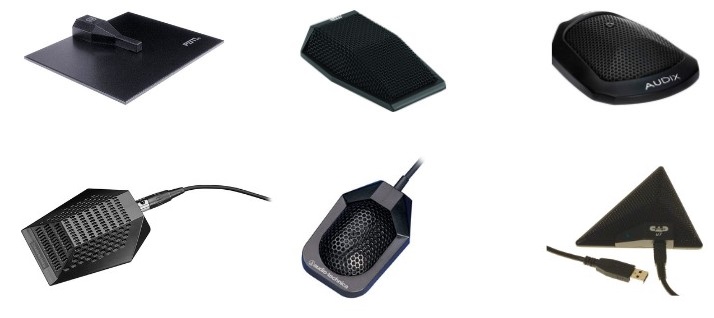
Advantages & Disadvantages of Omni-Directional Microphones
Omni-directional microphones offer several advantages:
- Natural Sound Capture: They capture sound as it naturally occurs in the environment, making them ideal for capturing room acoustics and ambiance.
- Equal Sensitivity: They are equally sensitive to sound from all directions, eliminating the need for precise microphone positioning.
- Low Handling Noise: Omni mics are less prone to handling noise because their pickup pattern is not affected by movement.
- Durability: Their simple design makes them robust and less prone to damage compared to microphones with complex directional elements.
- Versatility: They excel in a wide range of applications, making them versatile tools for audio professionals.
While omni-directional microphones have many advantages, they also have limitations:
- Lack of Directionality: They cannot isolate or reject sounds coming from a specific direction, which can be a disadvantage in noisy environments.
- Sensitivity to Room Acoustics: In untreated or poorly acoustically-treated spaces, omni mics may capture unwanted reflections and room reverberation.
- Wind Noise: Omni mics are susceptible to wind noise, requiring additional wind protection when used outdoors.
- Feedback Risk: In live sound applications, omni mics can be prone to feedback if not carefully managed.
Exploring Polar Patterns in Microphones
Microphones come in various polar patterns, each with its unique characteristics and applications. Understanding these patterns is essential for achieving the desired audio capture in different scenarios. Let’s delve into the common polar patterns and their practical uses:
Cardioid (Unidirectional) Polar Pattern
The cardioid pattern is the most prevalent in microphones, characterized by its unidirectional nature. Its name derives from the heart-shaped “cardioid†region around the front of the microphone, where it picks up sound most effectively. This pattern is ideal for capturing sound sources directly in front of the microphone while minimizing noise and interference from the sides or rear.
Figure-Eight (Bidirectional) Polar Pattern
Figure-eight microphones exhibit a polar pattern resembling the number eight, picking up sound from both the front and rear of the microphone but rejecting sounds from the sides. These microphones excel in scenarios where you need to capture audio from the front and behind the microphone. For instance, they are perfect for interviews when the microphone is placed between the interviewer and interviewee, ensuring it captures both voices effectively.
Omnidirectional Polar Pattern
Omnidirectional microphones capture sound from all directions in a spherical region around the microphone. They exhibit equal sensitivity to sound arriving from any angle. This versatile pattern finds extensive use in lavalier and headset microphones, allowing individuals to move freely and speak in different directions while maintaining clear audio capture.
While there are several other polar patterns available, it’s essential to note that many of them are hybrids or variations of the omnidirectional and figure-eight patterns. The choice of polar pattern depends on the specific recording or broadcasting needs.

The Challenges of Omnidirectional Polar Patterns
Omnidirectional patterns are favored for high-fidelity music recording settings, such as classical music recorded in controlled environments. However, they present challenges in live settings due to their susceptibility to noise and reflections from speaker systems. Careful microphone and speaker positioning can mitigate these issues, but it can be a complex task to execute effectively.
Even in controlled settings, the omnidirectional pattern may capture unwanted ambient sounds. To combat this, precise microphone placement relative to sound sources is essential. Achieving optimal audio capture with an omnidirectional microphone often requires meticulous planning and consideration of the acoustic environment.
Conclusion
In conclusion, understanding the technology behind omnidirectional microphones is essential for selecting the right tool for capturing pristine audio in various scenarios. These microphones, with their pressure capsules, excel at capturing sound from all directions, making them invaluable in applications where omnidirectional sensitivity is crucial. Conversely, gradient capsules in unidirectional microphones cater to situations where focused sound capture is needed.
By grasping the capsule types and their impact on microphone behavior, you can make informed choices that enhance your audio recording and broadcasting endeavors. We hope this article has shed light on the intricate world of omnidirectional microphones, making it easier for you to choose the right microphone for your specific needs.
We value your opinion! Share your thoughts and feedback on this article or any additional questions you may have about microphones and audio technology. Your insights help us improve and provide you with more valuable content.
Frequently Asked Questions
What is an omnidirectional microphone used for?
Omnidirectional microphones are commonly used in lavalier and headset mics, allowing freedom of movement while ensuring clear voice capture from various directions.
What is the difference between omnidirectional and directional microphones?
Omnidirectional microphones capture sound evenly from all directions, while directional microphones focus more on specific directions, emphasizing one source over others.
What are the advantages of using an omnidirectional microphone?
Omnidirectional mics:
- Capture sound from all directions.
- Perform well in various positions.
- Handle wind, plosives, and vibration.
- Are suitable for nature and stereo recordings.
How does an omnidirectional microphone differ from a cardioid microphone?
Omnidirectional mics uniformly pick up sound from all directions, but they become slightly directional at high frequencies based on their size. Cardioid mics are more directional at high frequencies and less so at lower frequencies.
Why should I use an omnidirectional microphone?
Omnidirectional mics pick up sound equally from all directions, making them ideal for capturing multiple simultaneous sounds like musical instruments or conversations.
What is the effective range of an omnidirectional microphone?
Typically, an omnidirectional mic produces satisfactory recordings when placed about 2 feet away from the sound source.
Are there any disadvantages to using omnidirectional microphones?
Omnidirectional microphones may pick up unwanted sounds, potentially capturing ambient noise or unintended sources.
Do omnidirectional microphones exhibit proximity effects?
Omnidirectional microphones, being pressure microphones, do not display proximity effect because sound only has access to the front of the diaphragm.
At what frequency sound is omnidirectional?
Sound localization, where sound is perceived as omnidirectional, generally ends at an average frequency of around 80Hz, although this can vary among individuals.
Is human hearing omnidirectional?
Human hearing tends to be omnidirectional, primarily due to the design of the eardrum, which responds to pressure changes. However, the large size of the head can create a sound shadow effect, affecting sound perception, especially for frequencies above 800Hz when sounds originate from the opposite side of the ear canal.
Superfast Recovery Rectifier is the most popular use for diodes. Fast rectifiers convert alternating current (AC) to direct current (DC). They only allow one-way flow of electrons. Rectifiers have many uses and are often found serving as components of high-voltage direct current power transmission systems and DC power supplies. Fast rectifier diodes feature very low reverse recovery time, very low switching losses and low noise turn-off switching.

Super Fast Rectifiers,Fast Recovery Rectifiers,Super Fast Recovery Rectifier,Ultra Fast Rectifier Diodes
Changzhou Changyuan Electronic Co., Ltd. , https://www.changyuanelectronic.com